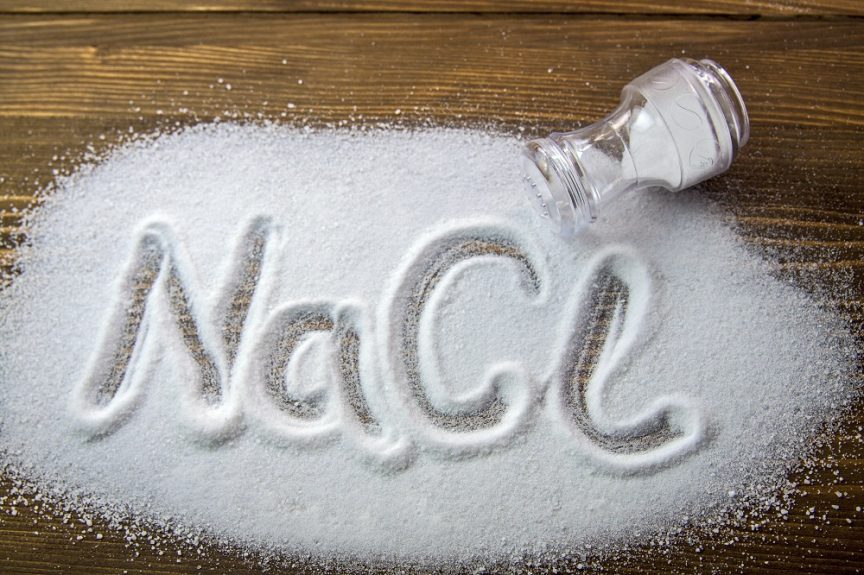Sodium chloride, commonly known as table salt, is a fundamental compound that has been used for thousands of years. It consists of sodium ions (Na+) and chloride ions (Cl-) that are held together by electrostatic forces. Despite bing a vital substance in our daily lives, there is confusion about whether sodium chloride is a molecule or not. In this article, we will delve into the scientific facts to answer the question: is NaCl a molecule?
To understand the answer to this question, we first need to define what a molecule is. A molecule is a group of atoms that are held together by covalent bonds. In a covalent bond, two atoms share one or more pairs of electrons to create a stable compound. Examples of covalent compounds include water (H2O) and methane (CH4).
On the other hand, ionic compounds are formed when atoms of different elements transfer electrons to one another, creating ions. These ions are held together by strong electrostatic forces, known as ionic bonds. Sodium chloride is an ionic compound because it is formed by the transfer of an electron from sodium to chloride, resulting in the formation of Na+ and Cl- ions, respectively.
Therefore, based on the definition of a molecule, we can conclude that NaCl is not a molecule because it does not consist of atoms held together by covalent bonds. Instead, it is an ionic compound made up of sodium ions and chloride ions held together by ionic bonds.
It is important to note that although NaCl is not a molecule, it still exhibits many properties of a compound. For example, it has a definite chemical formula, a fixed ratio of elements, and can undergo chemical reactions, just like any other compound.
Sodium chloride, or NaCl, is not a molecule. It is an ionic compound consisting of sodium ions (Na+) and chloride ions (Cl-) held together by electrostatic forces. Understanding the difference between ionic compounds and molecules is crucial to our knowledge of chemistry and the properties of substances around us.
Is NaCl A Molecule Or Compound Or Element?
NaCl is a compound and not a molecule or element. A molecule is a combination of two or more atoms that are chemically bonded together, while an element is a substance that consists of one type of atom only. On the other hand, a compound is a substance that is composed of two or more different elements that are chemically bonded together in a fixed ratio.
In the case of NaCl, it is a compound that is made up of two different elements, sodium (Na) and chlorine (Cl), whih are chemically bonded together in a 1:1 ratio. The bond between the sodium and chlorine ions in NaCl is an ionic bond, which is a type of chemical bond that involves the transfer of electrons between two atoms.
Therefore, NaCl is not a molecule or an element, but a compound that is formed by the chemical bonding of two different elements, sodium and chlorine, in a fixed ratio.

Is NaCl Ionic Or Molecule?
NaCl (sodium chloride) is an ionic compound and not a molecule. Ionic compounds are formed by the transfer of electrons between atoms, resulting in the formation of ions. In the case of NaCl, sodium (Na) loses an electron to form a positively charged ion (Na+), while chlorine (Cl) gains an electron to form a negatively charged ion (Cl-). These oppositely charged ions attract each other and form an ionic bond, creating the compound NaCl.
In contrast, molecules are formed by the sharing of electrons between atoms, resulting in covalent bonds. Water (H2O), for example, is a molecule because the hydrogen (H) and oxygen (O) atoms share electrons to form covalent bonds.
NaCl is an ionic compound because it is formed by the transfer of electrons between atoms, whch results in the formation of ions that are held together by electrostatic attraction. It is not a molecule because it does not involve the sharing of electrons between atoms.
Is NaCl Salt Or Molecule?
NaCl is a salt, not a molecule. Salt is an ionic compound that forms through the combination of a cation and an anion. In the case of NaCl, the cation is a sodium ion (Na+) and the anion is a chloride ion (Cl-). These ions are held together by ionic bonds, which result from the attraction between positively and negatively charged ions. Therefore, NaCl is not a molecule since it does not consist of covalently bonded atoms. Instead, it is an ionic compound made up of positively and negatively charged ions.
Conclusion
Sodium chloride (NaCl) is not a molecule, but an ionic compound. Unlike molecules, which are formed by the sharing of electrons between atoms, ionic compounds are formed by the transfer of electrons, creating ions that are held together by electrostatic forces. NaCl consists of positively charged sodium ions (Na+) and negatively charged chloride ions (Cl-), held together in a 1:1 ratio. While often referred to as table salt, NaCl has many important uses in industries such as food, medicine, and chemistry. Understanding the difference between molecules and ionic compounds is crucial in understanding the behavior and properties of different substances.
